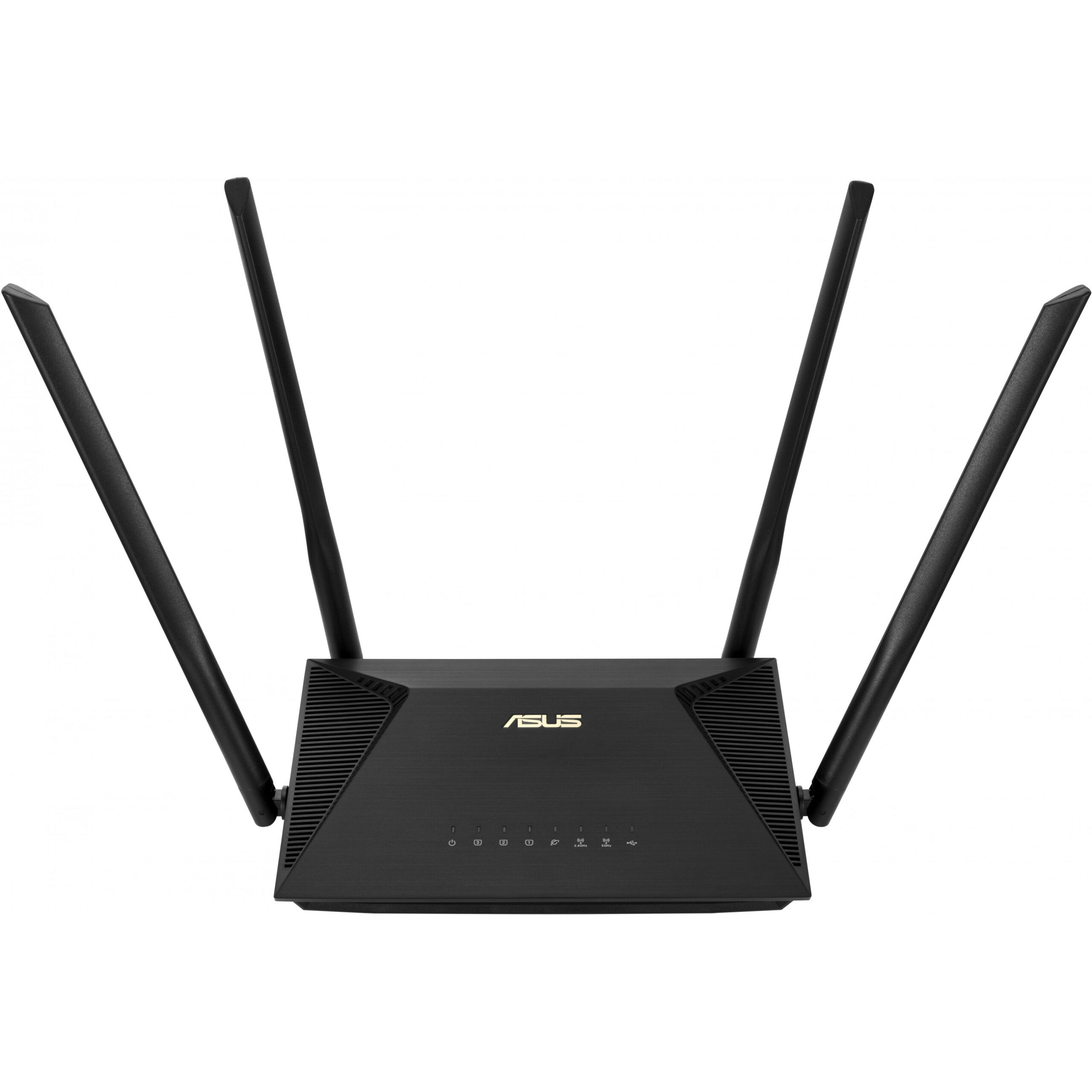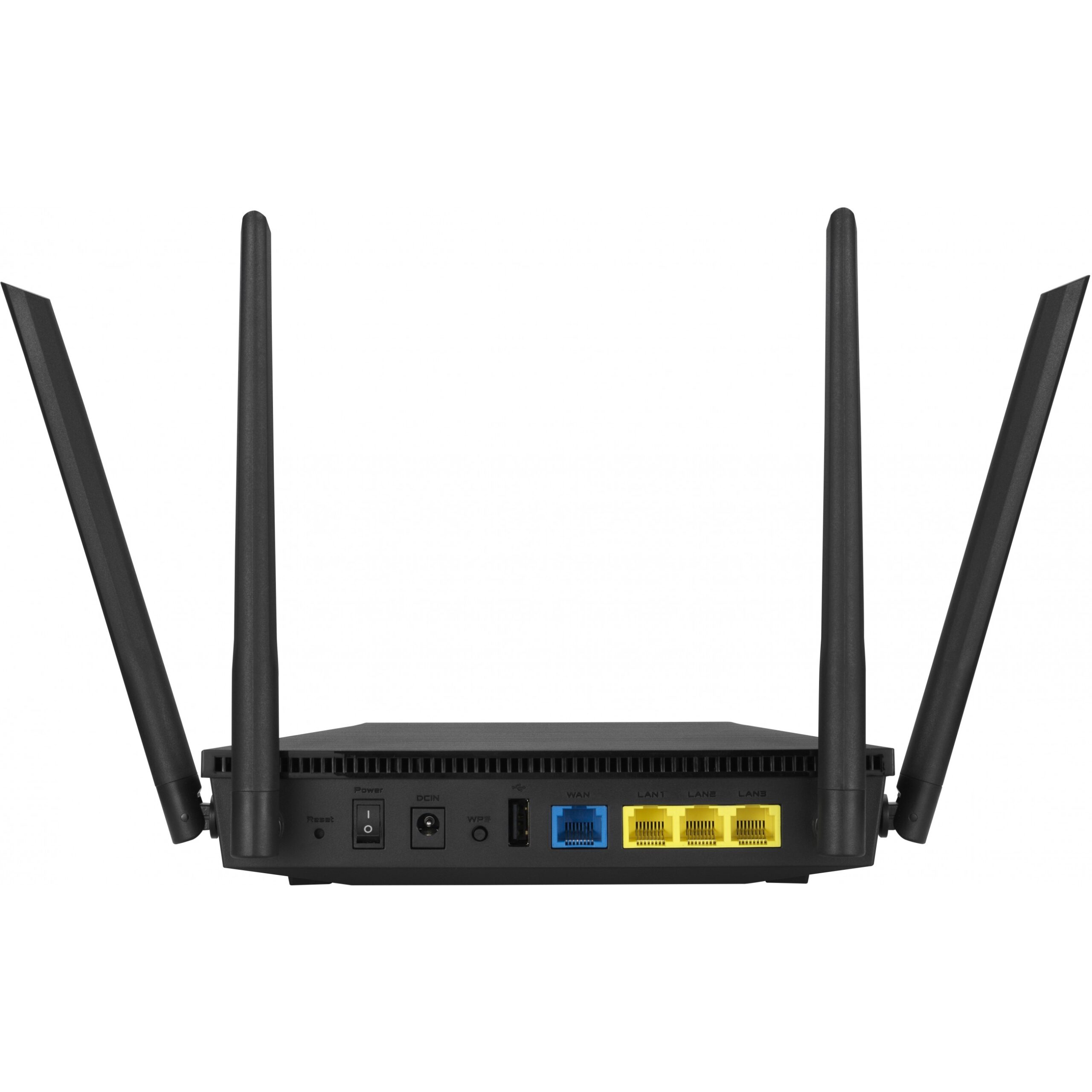ASUS RT-AX53U
€90.22
ASUS RT-AX53U, Wi-Fi 6 (802.11ax), Dual-band (2.4 GHz/5 GHz), Built-in Ethernet port, 3G, Black, Tabletop router
16 in stock
Description
ASUS RT-AX53U. WAN connection type: RJ-45. WLAN band: dual band (2.4 GHz/5 GHz), top WLAN standard: Wi-Fi 6 (802.11ax), WLAN standards: 802.11a, 802.11b, 802.11g, Wi-Fi 4 (802.11 n), Wi-Fi 5 (802.11ac), Wi-Fi 6 (802.11ax). Ethernet LAN interface type: Gigabit Ethernet, Ethernet LAN data transfer rates: 10,100,1000 Mbit/s, cabling technology: 10/100/1000Base-T(X). Supported security algorithms: SSH, WPA, WPA2, WPA2-Enterprise, WPA3. Product type: Tabletop router, Color of product: Black, LED indicators: LAN, Power, USB, WAN
Get your home ready for WiFi 6 (802.11ax)
The growing number of connected personal and IoT devices has led to an overall increase in network density that is pushing the current WiFi standard to its limits. The latest 802.11ax standard brings future-proof technologies, greater network efficiency, faster WiFi speeds, greater coverage, and improved battery life for connected devices, providing users with a much better network experience.
*802.11ax compatible devices are required to take advantage of the benefits and speeds of the 802.11ax WiFi standard.
New generation WiFi speed
The RT-AX53U is a 2×2 dual-band WiFi router that offers 80MHz bandwidth and 1024-QAM for significantly faster wireless connections. With an overall network speed of around 1800Mbps – 574Mbps on the 2.4GHz band and 1201Mbps on the 5GHz band – the RT-AX53U is 1.5x faster than 2×2 dual-band routers supporting the 802.11ac -Use standard.
Developed for households with many devices
Featuring a revolutionary combination of OFDMA and MU-MIMO technology, 802.11ax technology delivers up to four times the network capacity and efficiency in high-traffic environments. The previous generation, 802.11ac WiFi can only handle one device at a time on each network channel, which means inefficient use of the available bandwidth. OFDMA support in the 802.11ax WiFi standard divides each channel into small sub-channels, allowing signals from multiple devices* to be bundled and transmitted simultaneously. This reduces latency and provides a smoother, more responsive Wi-Fi experience.
Better battery life for your devices
Target Wake Time (TWT) allows the RT-AX53U to schedule precise intervals for data transmission between each device. This allows devices to go to sleep when they are not waiting for a router signal. The power consumption is reduced by up to 7 times and the battery life* is significantly extended.
A WLAN that goes further
The RT-AX53U uses the latest 802.11ax WiFi standard with OFDMA technology. It provides longer WiFi signal range and better coverage by dividing each channel into smaller sub-channels. These sub-channels have a smaller bandwidth that allows you to travel up to 80% more distance1. The result is a better WiFi connection throughout your home*.
Protection for your home network
The RT-AX53U features ASUS AiProtection, a commercial-grade network security system powered by the Trend Micro™ smart home network. With AiProtection, all connected devices are protected even if they don't come with their own antivirus capabilities – such as IoT devices AiProtection blocks all internet-based attacks before they reach the network. Should an infected device be detected on the network, AiProtection will immediately block it to prevent personal data from being sent to insecure servers.
Extensive connectivity options
The RT-AX53U has a Gigabit WAN port, three Gigabit LAN ports and a USB 2.0 port*. With its dedicated connections for smart TVs, game consoles, NAS devices, backup internet and much more, the RT-AX53U becomes the digital hub for home and network.
Full network control and optimization thanks to ASUSWRT
With the ASUSWRT dashboard user interface, users can set up, monitor and control network applications from a single intuitive interface. With a short setup time, multiple device detection, and flexible settings, ASUSWRT gets the most out of your network performance.
*Actual data throughput and WiFi coverage may vary based on network conditions and environmental factors. In particular, the volume of network traffic, the structure and construction of the building and the network overhead can negatively affect the actual data throughput and transmission power.



